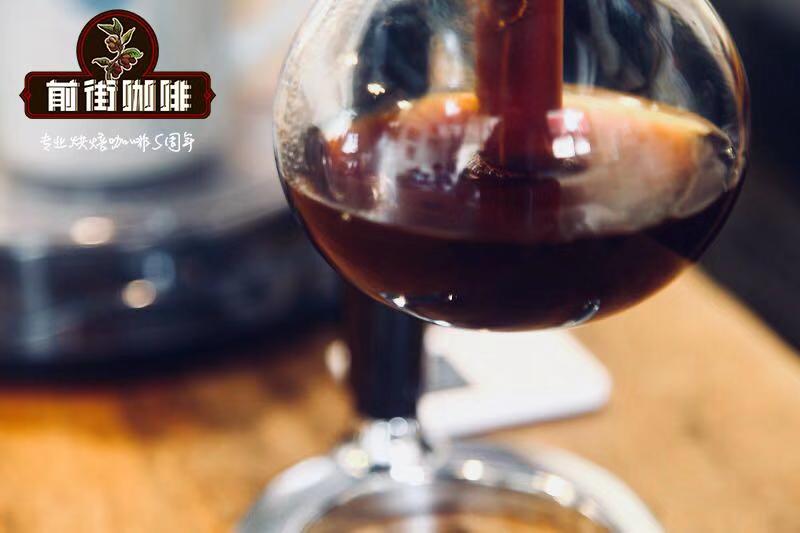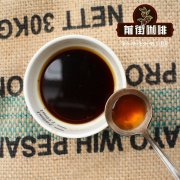Taste characteristics of Ethiopian Sidamo Coffee beans introduction to coffee flavor treated with Sidamo red honey

Professional coffee knowledge exchange more coffee bean information please follow the coffee workshop (Wechat official account cafe_style)
Qianjie Coffee-introduction of Red Honey Cherry
What is the Red Cherry Project?
The "Red Cherry Project" (ORC) is a project to improve the quality of small-scale farms. In 2007, Trabocca, the largest raw bean manufacturer in the Netherlands, proposed the "Red Cherry Project" in pursuit of high-quality Essex beans.
The plan requires that raw coffee beans should be picked not only by red fruit, but also by hand, but this is only the most basic requirement, and the plan is far from simple. The main purpose is to encourage soybean farmers and surprise roasters. Trabocca, the largest coffee bean manufacturer in the Netherlands, invited all Ethiopian farms to produce small batches of beans of about 1500 to 3000 kilograms (25,50 bags) before the harvest season. Women can only choose fully 100% ripe red cherries, which makes a big difference in the flavor of brewed coffee. So careful-eyed and industrious Ethiopian women are important drivers of the Red Cherry project.
The red cherry project is also a reinforcing method, which makes the farm pay more attention to the process of selecting beans. The prices of these coffees are also relatively high. Red cherry operations include washing, sun-drying beans, half-washing, half-sun, experimental coffee and so on. The main producing areas are Yega Sheffield, Sidamo, Penga Forest, Lekanti, Ken Bata, Irubarb, Hara, Lim, etc. In 2011, we joined the producing area of Coroja Golocha (near Harald), these are unique flavors that can fully show the flavor of Ethiopian coffee. Trabocca will choose from the coffee after receiving it. Farms that have passed the cup quality tests conducted by the offices in Ethiopia and the Netherlands will pay high bonuses. Trabocca, the promoter of the Red Cherry project, invests all the profits made in recent years in cooperative farms.
Treatment mode
This bean is treated with red honey.
The so-called honey treatment refers to the process of making raw beans with mucous membrane for sun-drying. After the outer pulp of the coffee bean is removed, there will be a layer of sticky jelly. The traditional washing method washes it away with clean water, but this direct drying method has been born because of the limitations of water resources in some high-altitude areas.
Pectin mucous membrane is the part with the highest content of coffee fructose, and it is also an important part of coffee fermentation. It can be said that 80% of this part determines the supply of nutrients in the process. Yellow honey retains 60% pectin, red honey retains 75% pectin, and black honey hardly removes pectin.
Flavor: it smells of ginger flowers, citrus, lemon and fruit sugar in the mouth, Chinese fir in the middle, honey sweetness in the middle, oolong tea in the end and a lingering finish.
END
Important Notice :
前街咖啡 FrontStreet Coffee has moved to new addredd:
FrontStreet Coffee Address: 315,Donghua East Road,GuangZhou
Tel:020 38364473
- Prev

How to drink Sidamo Coffee correctly introduce the taste of Sidamo Coffee
Professional coffee knowledge exchange more coffee bean information please follow the coffee workshop (Wechat official account cafe_style) front street coffee-Sidamo coffee tasting and taste introduction Sidamo coffee is a famous boutique coffee area in southern Ethiopia, growing in the southernmost Ethiopian plateau between 4600 and 7200 feet (Sidamo administrative region) above sea level, is heavy in southern Ethiopia
- Next

Sidamo Coffee and Colombian Coffee introduce the difference between Sidamo and Colombian Coffee
Professional Coffee knowledge Exchange more coffee bean information please follow Coffee Workshop (Wechat official account cafe_style) Front Street Coffee-comparison between Coffee Coffee and Colombian Coffee Sidamo is a coffee-producing area of southern Ethiopia at an elevation of 46007200 feet (14002194 m) above sea level and the southernmost part of the Ethiopian plateau bordering Kenya. From Ethiopia, a well-known coffee producing area.
Related
- Beginners will see the "Coffee pull flower" guide!
- What is the difference between ice blog purified milk and ordinary milk coffee?
- Why is the Philippines the largest producer of crops in Liberia?
- For coffee extraction, should the fine powder be retained?
- How does extracted espresso fill pressed powder? How much strength does it take to press the powder?
- How to make jasmine cold extract coffee? Is the jasmine + latte good?
- Will this little toy really make the coffee taste better? How does Lily Drip affect coffee extraction?
- Will the action of slapping the filter cup also affect coffee extraction?
- What's the difference between powder-to-water ratio and powder-to-liquid ratio?
- What is the Ethiopian local species? What does it have to do with Heirloom native species?

